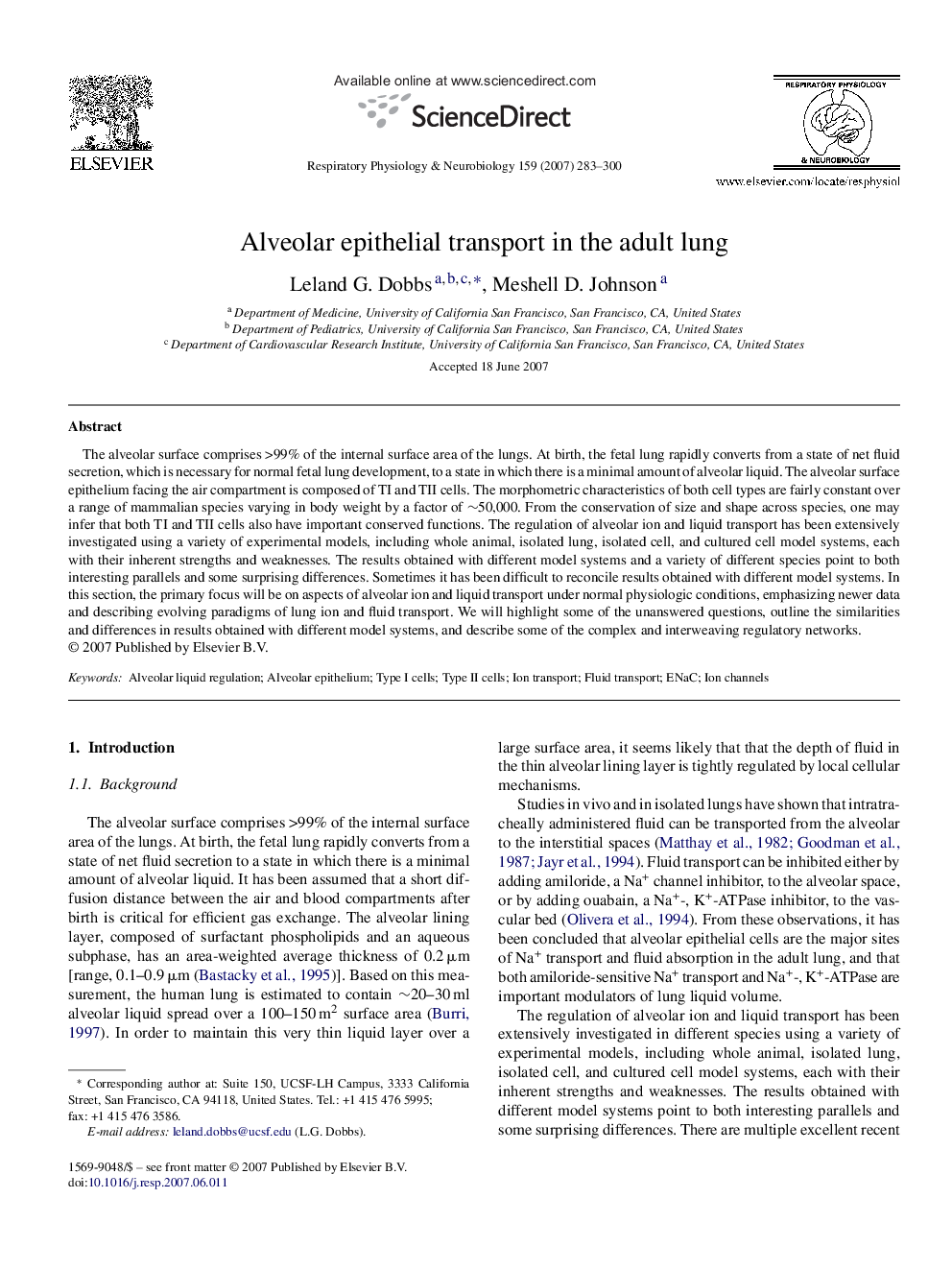| Article ID | Journal | Published Year | Pages | File Type |
|---|---|---|---|---|
| 2848216 | Respiratory Physiology & Neurobiology | 2007 | 18 Pages |
The alveolar surface comprises >99% of the internal surface area of the lungs. At birth, the fetal lung rapidly converts from a state of net fluid secretion, which is necessary for normal fetal lung development, to a state in which there is a minimal amount of alveolar liquid. The alveolar surface epithelium facing the air compartment is composed of TI and TII cells. The morphometric characteristics of both cell types are fairly constant over a range of mammalian species varying in body weight by a factor of ∼50,000. From the conservation of size and shape across species, one may infer that both TI and TII cells also have important conserved functions. The regulation of alveolar ion and liquid transport has been extensively investigated using a variety of experimental models, including whole animal, isolated lung, isolated cell, and cultured cell model systems, each with their inherent strengths and weaknesses. The results obtained with different model systems and a variety of different species point to both interesting parallels and some surprising differences. Sometimes it has been difficult to reconcile results obtained with different model systems. In this section, the primary focus will be on aspects of alveolar ion and liquid transport under normal physiologic conditions, emphasizing newer data and describing evolving paradigms of lung ion and fluid transport. We will highlight some of the unanswered questions, outline the similarities and differences in results obtained with different model systems, and describe some of the complex and interweaving regulatory networks.
